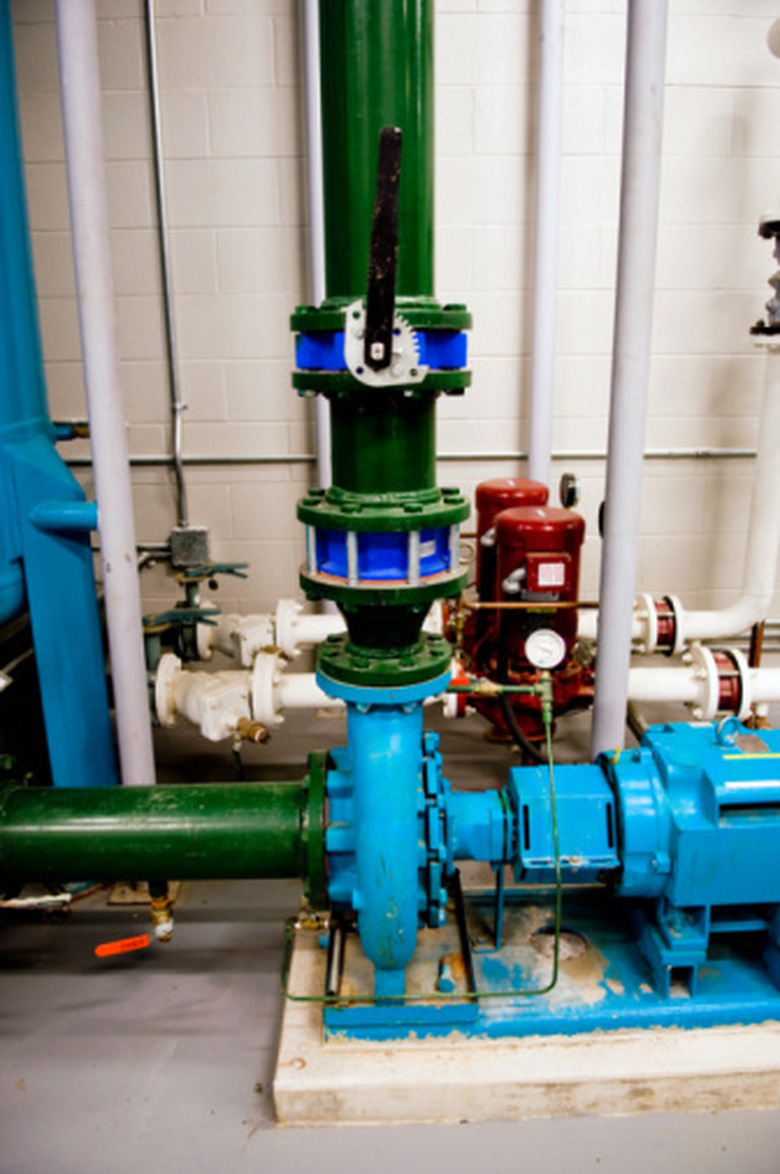How To Calculate Flow Rate With Pipe Size And Pressure
A higher pressure drop acting on a pipe creates a higher flow rate. A wider pipe also produces a higher volumetric flow, and a shorter pipe lets a similar pressure drop provide a greater force. The final factor controlling a pipe's viscosity is the fluid's viscosity. This factor measures the fluid's thickness in poise, or dyne seconds per square centimeter. A thicker fluid flows more slowly under the same pressure.
Step 1
Square the pipe's radius. With a radius, for instance, of 0.05 meters, 0.05 ^ 2 = 0.0025.
Step 2
Multiply this answer by the pressure drop across the pipe, measured in pascals. With a pressure drop, for instance, of 80,000 pascals, 0.0025 x 80,000 = 200.
Step 3
Multiply the constant pi by the answer to Step 1: 3.142 x 0.0025 = 0.00785. This answer is the pipe's cross-sectional area.
Step 4
Multiply the area by the answer to Step 2: 0.00785 x 200 = 1.57.
Step 5
Multiply the pipe's length by 8. With a length, for instance, of 30 meters: 30 x 8 = 240.
Step 6
Multiply the answer to Step 5 by the fluid's viscosity. If the fluid is water, its viscosity is 0.01, so 240 x 0.01 = 2.4.
Step 7
Divide the answer to Step 4 by the answer to Step 6: 1.57 / 2.4 = 0.654. The pipe's flow rate is 0.654 cubic meters per second.
Cite This Article
MLA
Menezes, Ryan. "How To Calculate Flow Rate With Pipe Size And Pressure" sciencing.com, https://www.sciencing.com/how-7959217-calculate-rate-pipe-size-pressure/. 7 August 2017.
APA
Menezes, Ryan. (2017, August 7). How To Calculate Flow Rate With Pipe Size And Pressure. sciencing.com. Retrieved from https://www.sciencing.com/how-7959217-calculate-rate-pipe-size-pressure/
Chicago
Menezes, Ryan. How To Calculate Flow Rate With Pipe Size And Pressure last modified March 24, 2022. https://www.sciencing.com/how-7959217-calculate-rate-pipe-size-pressure/
